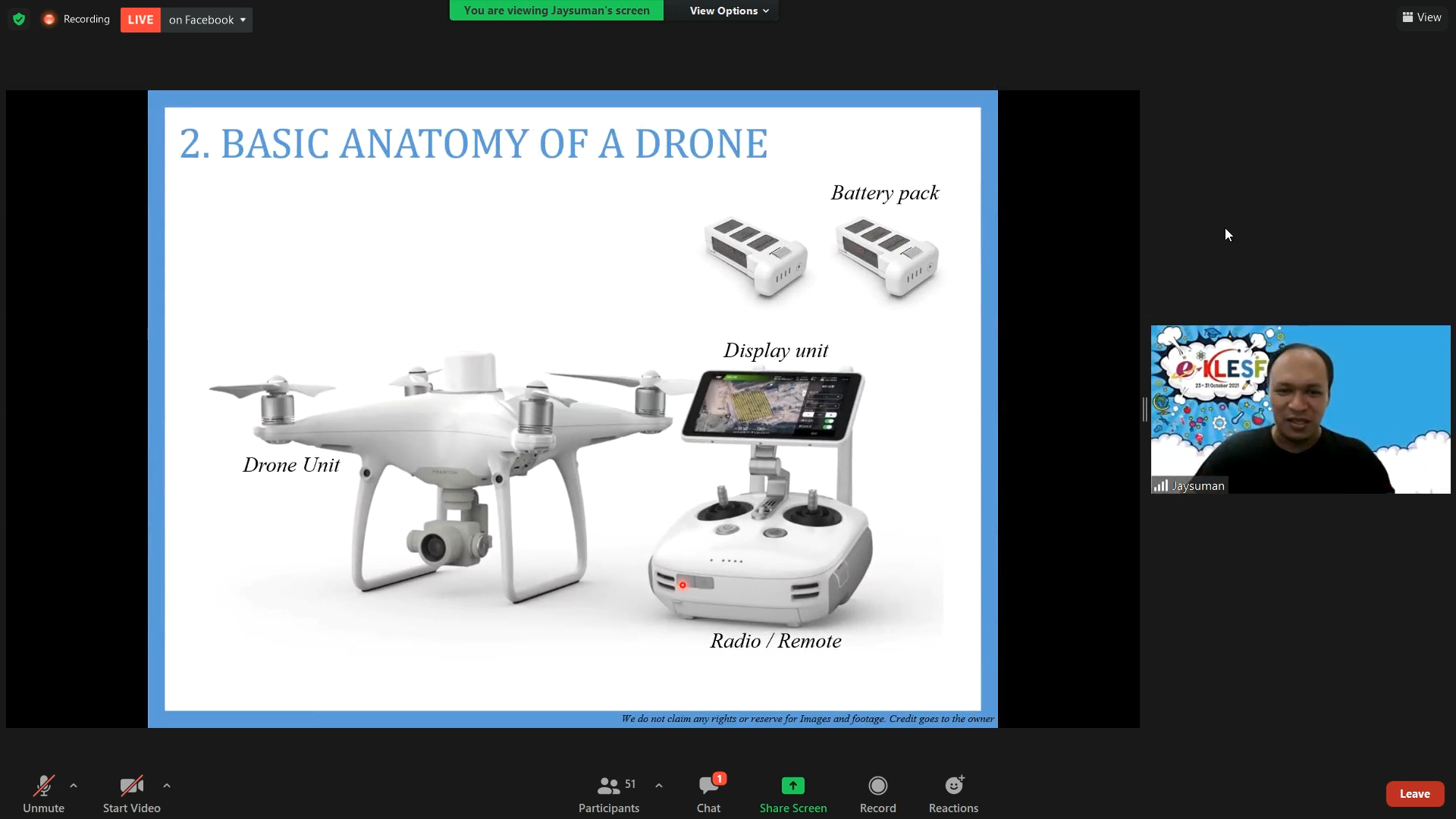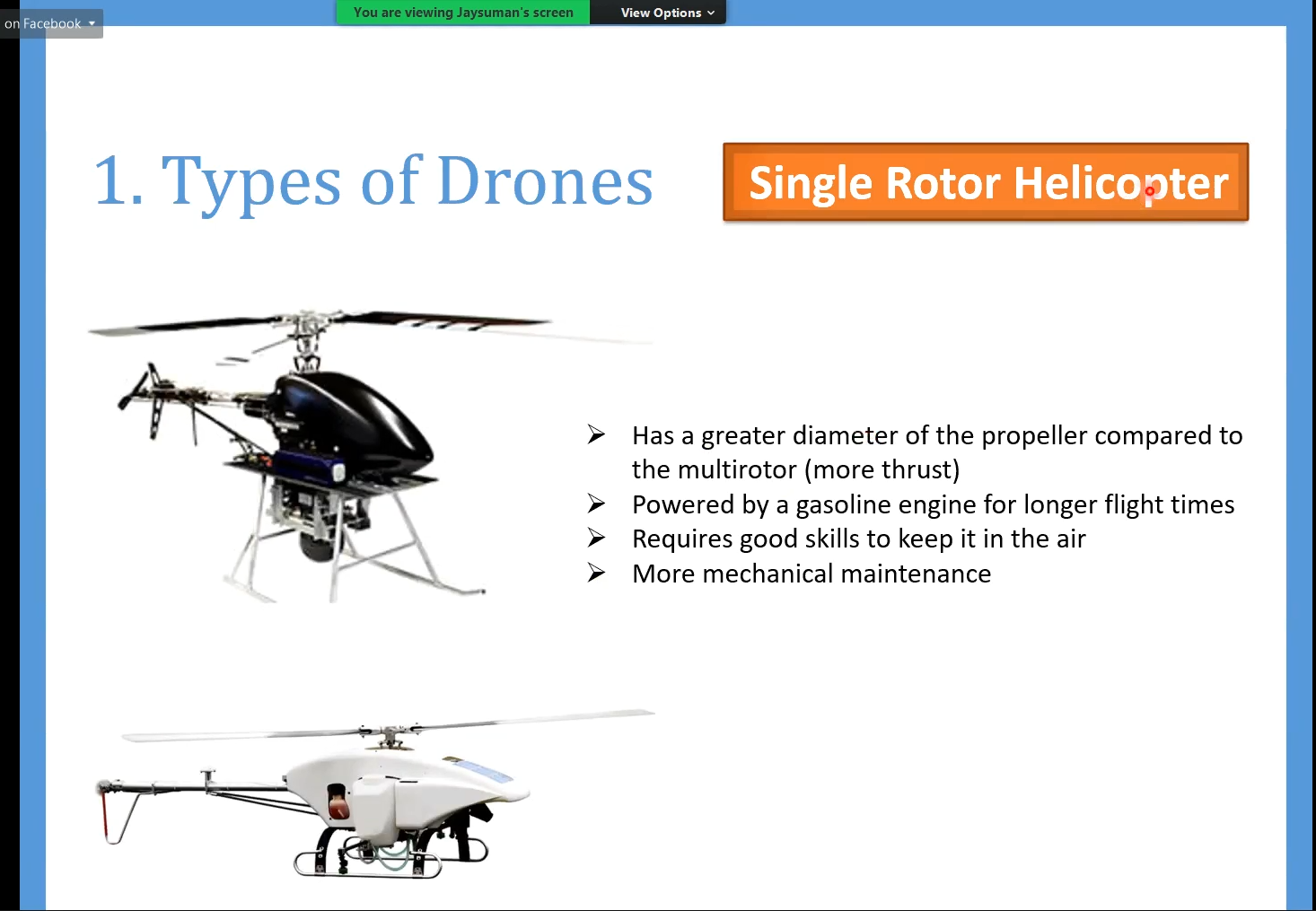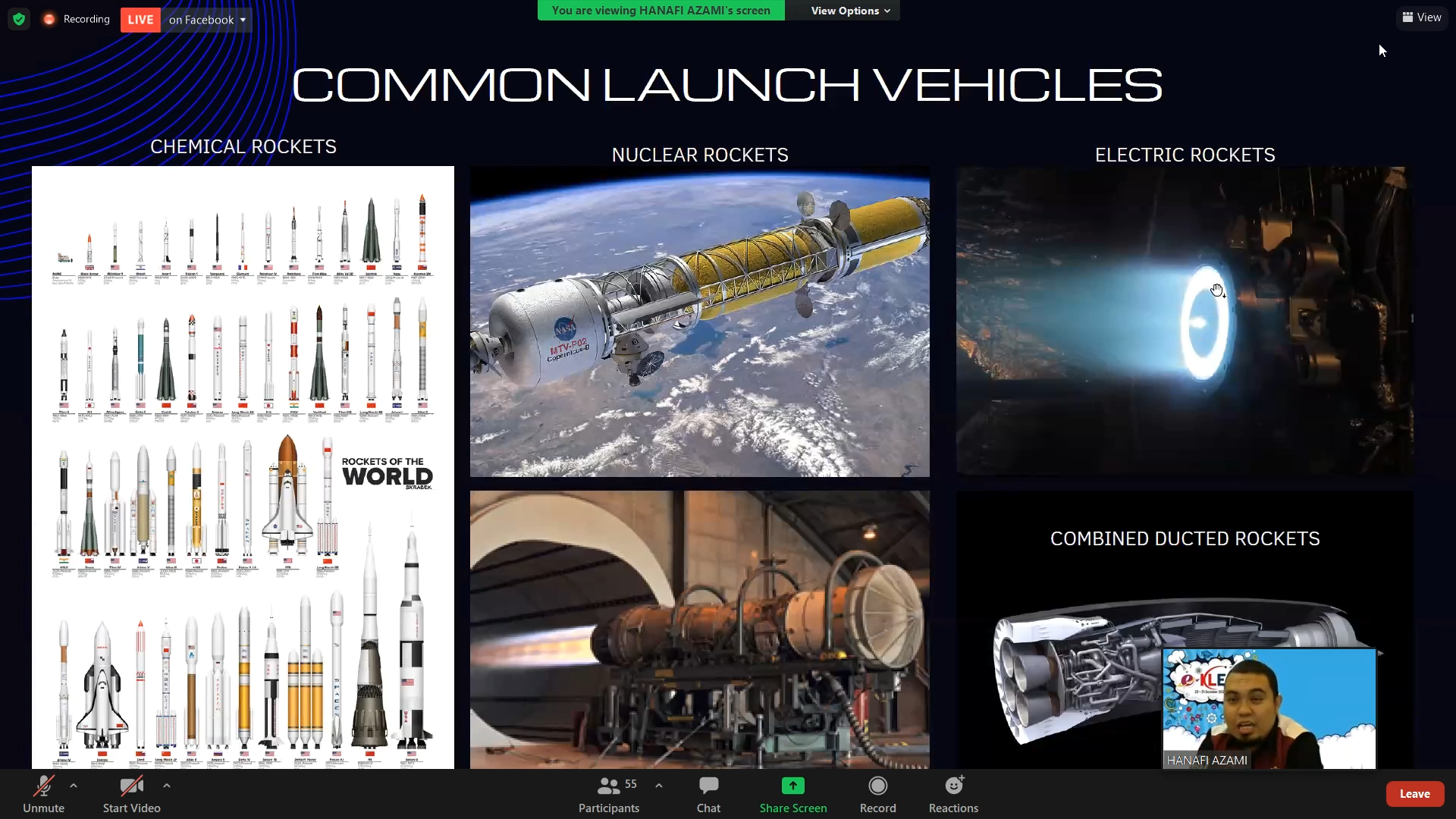
![]()
.jpg)
The e-KLESF
2021 webinars titled “Funtastic Drone-101” and “Rocket Science” were held on
29 October 2021 via Zoom and Facebook Live. The invited speakers were
Universiti Teknologi Malaysia (UTM) Faculty of Engineering Ts Dr Jaysuman
bin Pusppanathan and International Islamic University Malaysia Faculty of
Engineering Ts Dr Muhammad Hanafi Azami. The speakers were from the Young
Scientists Network, Academy Science Malaysia (YSN-ASM).

Dr Jaysuman speaking about drones
Dr Jaysuman’s
webinar titled “Funtastic Drone-101” aimed to raise awareness of drone
technology provide basic knowledge about drones to the public. In his talk,
he shared about Industry 4.0; what is a drone; the difference between a
drone and an unmanned aerial vehicle (UAV), the basic anatomy of a drone;
the types of drones; the working principle and its application.
He said,
“Industry 4.0 has been defined as a name for the current trend of automation
and data exchange in manufacturing technologies, including the Internet of
things, cloud computing, autonomous robots, simulation, system integration,
cyber security, additive manufacturing, augmented reality and big data.”


Dr Jaysuman showing participants the
basic anatomy of a drone
DrJaysuman
shared, “Drones (Dynamic Remotely Operated Navigation Equipment) are also
known as flying robots. There are four types of drones, namely Single Rotor
Helicopter, Multi-Rotor Drones, Fixed-Wing Drones and Fixed-Wing Hybrid
VTOL.” “Drones are widely used in geography mapping, agriculture, search and
rescue, inspection work, natural disaster or firefighting and shipping and
delivery,” he added.




Dr Jaysuman showing the types of
drones
On the other
hand, Dr Muhammad Hanafi enlightened the participants on the topic “Rocket
Science”. In his webinar, he aimed to let participants understand the
fundamentals of rocket’s elements and their applications and explore
non-rocket space launch possibilities. During the talk, he shared what are
rockets?; why are rockets needed?; how do rockets work?; the history of
rockets and non-rocket space launches.

Dr Muhammad Hanafi feeling excited to
share his passion with the participants
Dr Muhammad
Hanafi first introduced, “Space science encompasses all of the scientific
disciplines that involve space exploration, the study of natural phenomena
and physical bodies occurring in outer space, such as space medicine and
astrobiology, while Space technologies include launch vehicles - rockets;
telescopes – Hubble Space Telescope and James Webb Space Telescope;
spacecraft, satellites and probes - Lucy (spacecraft), Mars 2020
Perseverance Rover.”
While
elucidating on rockets, he said, “Rockets propulsion is a class of jet
propulsion that produces thrust by ejecting a matter called the working
fluid or propellant and stored entirely in the flying vehicle.”

Dr Muhammad Hanafi showing
participants the anatomy of rockets


Dr Muhammad Hanafi showing
participants the varieties of common launch vehicles and non-rocker space
launcher

The common questions about rocket
science

Speakers and participants after the
webinar
The talk concluded with an extensive yet insightful Q&A session, followed by
a photo-taking session.
Wholly owned by UTAR Education Foundation (200201010564(578227-M)) LEGAL STATEMENT TERM OF USAGE PRIVACY NOTICE